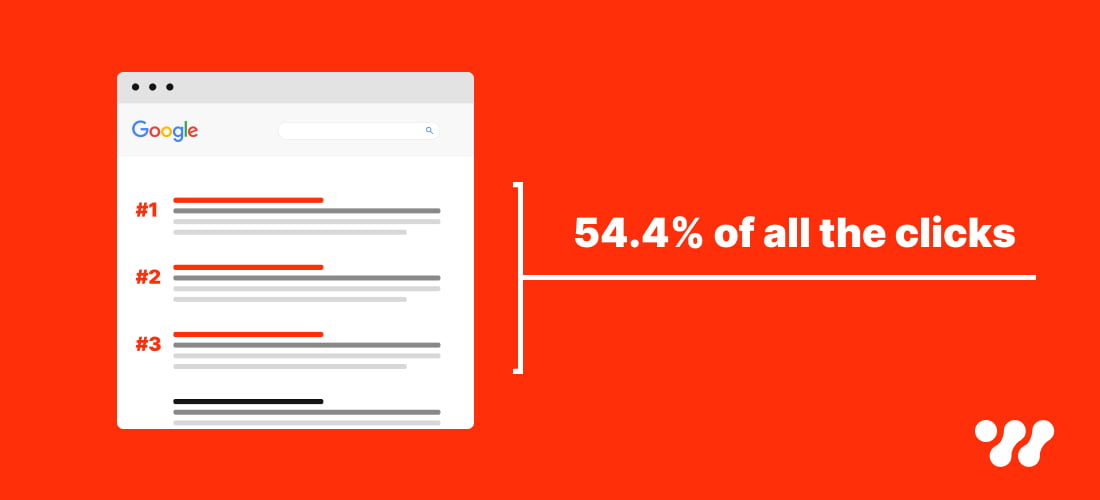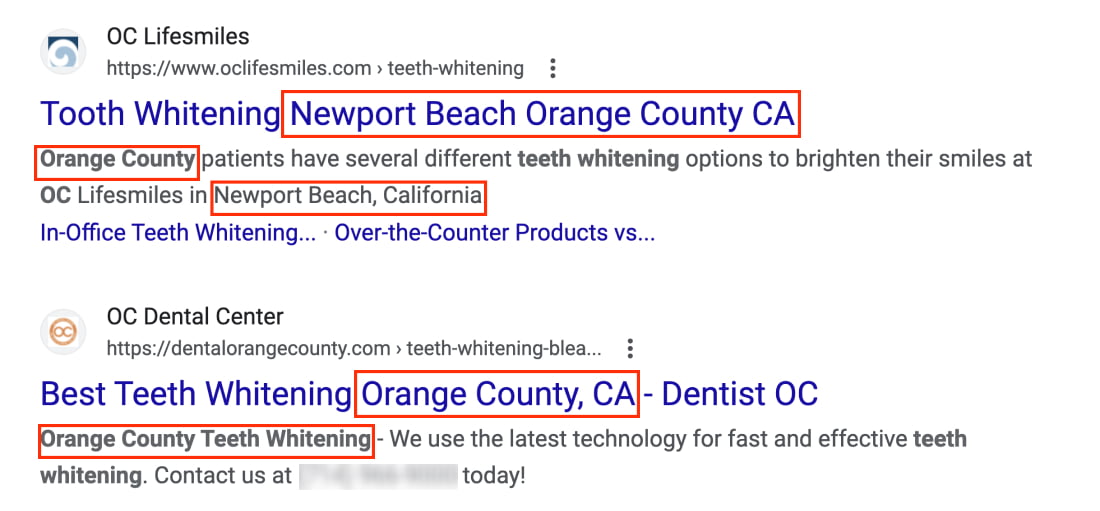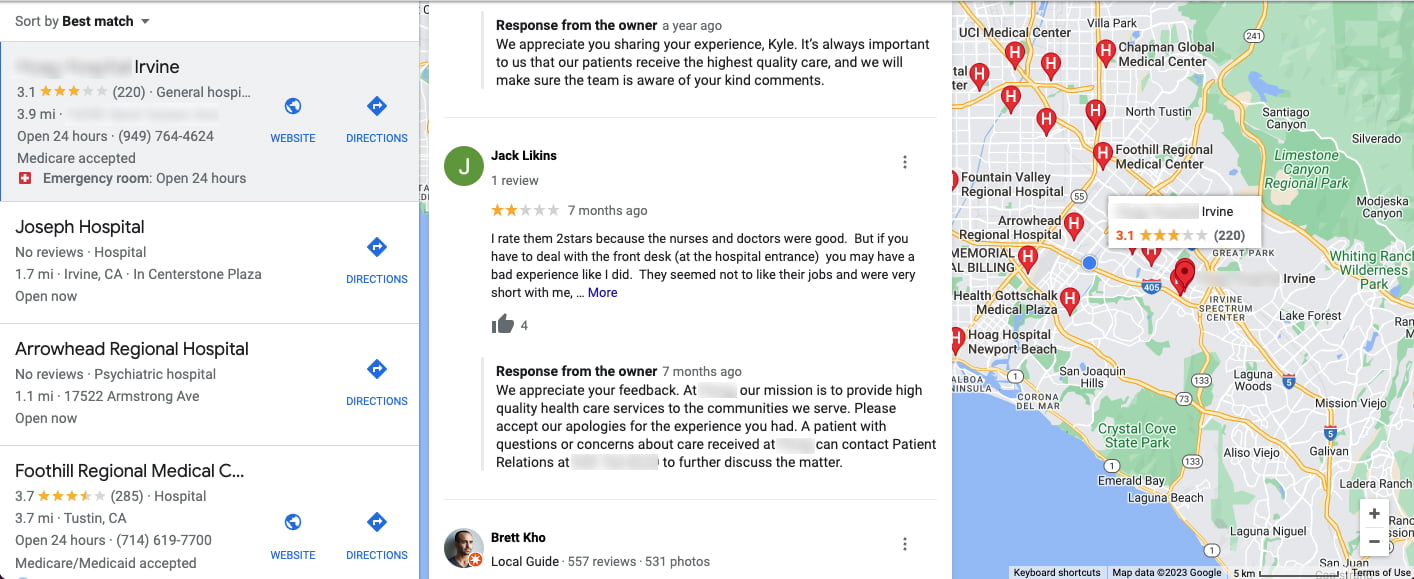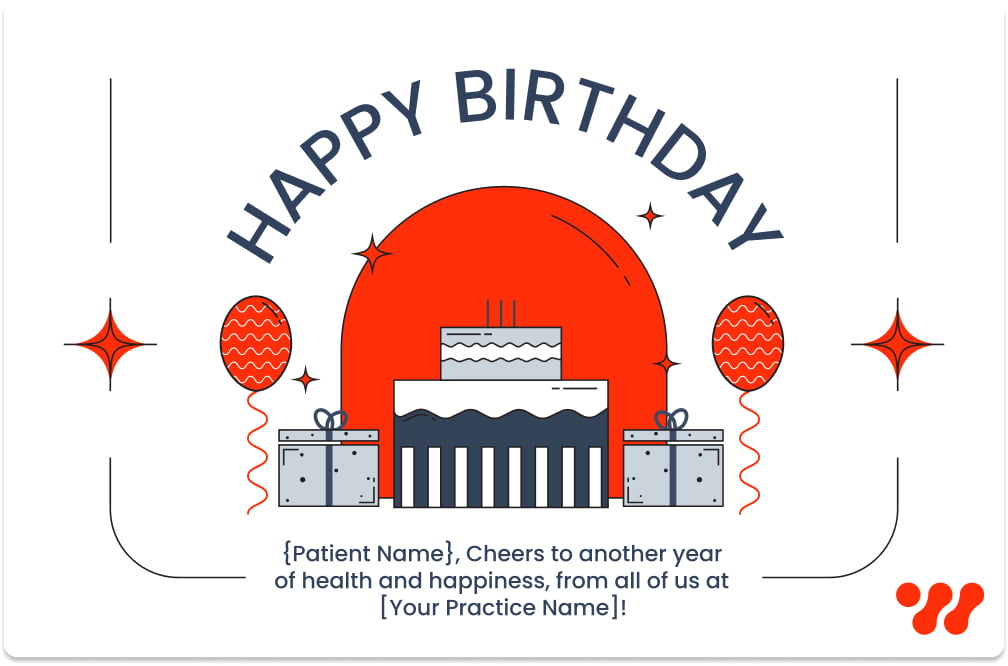
To our dedicated healthcare marketers, healthcare companies, and all those invested in the intricate world of healthcare marketing – we welcome you.
As a seasoned Healthcare Marketing Agency, we’re always at the pulse of change, closely watching the dynamic shifts in the healthcare digital landscape. The recent pandemic has fast-tracked a new age of digital healthcare, catalyzing a monumental shift in the ways people seek and process healthcare information.
This transformative era has given rise to a set of healthcare marketing trends that we can’t afford to ignore. In this article, we unravel the major healthcare marketing trends that have dominated 2023:
Join us as we delve deeper into these trends, enlightening ourselves with key insights and data, to strategically adapt and thrive in this evolving healthcare marketing sphere.
The importance of SEO can no longer be overstated. Once considered a luxury, it has swiftly emerged as a core element in healthcare marketing strategy, underscored by compelling statistics.
Research shows that a staggering 5% of all Google searches are health-related (Source: Google). More intriguingly, search drives three times more visitors to hospital websites compared to non-search (Source: Google).
These figures illustrate a clear trend – people are increasingly turning to search engines to seek out healthcare information and services. This makes search visibility crucial for healthcare providers.
In a competitive scenario, the absence of a strong SEO strategy can lead to lost opportunities. A recent study revealed that patients who booked healthcare appointments ran three times more searches than those who didn’t (Source: Google).
This points towards a direct correlation between search activities and patient conversion. In other words, a healthcare provider with effective SEO stands a higher chance of attracting and converting potential patients.
Before we delve further into the significance of SEO in healthcare marketing, let’s simplify what SEO entails. In essence, Search Engine Optimization (SEO) is a methodology of strategies, techniques, and tactics used to increase the visibility of a website or a web page in a search engine’s “organic” or unpaid results.
The objective of SEO is to improve your website’s position on search engines like Google, Bing, and Yahoo. The higher a website naturally ranks in organic search results, the greater the chance that site will be visited by a user, potentially leading to patient conversions.

Search Drives Traffic to Hospital Websites
Data from Google indicates that “search drives three times more visitors to hospital sites compared to non-search sources.”
(Source – Think with Google)
For an in-depth exploration of SEO in healthcare marketing, we invite you to explore our comprehensive resource: 7 Core Healthcare SEO Pillars. This guide provides a detailed overview of the fundamental elements of SEO, tailored specifically for the healthcare industry, to help you effectively navigate and succeed in the digital healthcare landscape.
In the world of healthcare marketing, the advent of digital technologies has made geographical distances less relevant. Despite global connectivity, the demand for localized services remains high, underlining the importance of local visibility.
This is particularly apparent in healthcare, where “near me” searches have doubled since 2015 (Source: Google). As patients increasingly rely on search engines to find healthcare services in their vicinity, the role of Local SEO has grown significantly.
Claiming and updating your Google Business Profile can lead to significant wins for healthcare practices of all sizes. It’s the digital equivalent of hanging your shingle in the online world. It lets people know who you are, where you are, and what services you offer, directly influencing your visibility in local searches.
Remember that Sunday morning when you Googled “best breakfast near me,” or that evening when you urgently needed to find the “closest pharmacy?” Admit it, we’ve all been there!
Now, translate that to the healthcare landscape. Just as you’ve hunted for the fluffiest pancakes or the nearest drugstore, patients in your area are typing “dentist near me,” “pediatrician near me,” or “urgent care near me” into their search bars.
What does this mean for you? These searchers are potential patients actively looking for the services you provide, right in your locality.
Optimizing your website for these local search terms is like turning on your neon ‘Open’ sign in the digital realm – making you visible, accessible, and ready to serve these local patients effectively. So, while the pancakes are sizzling, let’s dive into how you can make the most of this opportunity.
Ranking for local search terms is a multifaceted process that involves optimizing various elements of your website. Here are some simple steps:
Let’s consider a hypothetical example of a dental clinic offering teeth whitening services in Orange County. Here’s how they might optimize their webpage for local search:
Title Tag: “Top-Rated Teeth Whitening Service in Orange County | ABC Dental Clinic”
Meta Description: “ABC Dental Clinic offers safe, effective, and affordable teeth whitening services in Orange County. Book your appointment today for a brighter, whiter smile!”Header Tags (H1, H2, H3, etc.): These would include terms like “Professional Teeth Whitening in Orange County,” “Orange County’s Trusted Teeth Whitening Clinic,” etc

With the influx of digital interactions in the healthcare realm, a seamless user experience (UX) is no longer just a “nice-to-have” feature – it’s a core expectation. The user experience of your website, which encompasses aspects such as accessibility, usability, and navigation, directly influences patient engagement and conversions.
Additionally, search engines have their own standards for user experience, specifically encapsulated in Google’s E-E-A-T (Experience, Expertise, Authority, Trustworthiness) guidelines and YMYL (Your Money or Your Life) pages.
Given the sensitive nature of healthcare information, Google emphasizes the importance of E-E-A-T for medical websites. It’s like the Hippocratic Oath for your website – an assurance that your website can be trusted to provide reliable, beneficial information.
Ensuring your healthcare website reflects these high levels of experience, expertise, authority, and trustworthiness can significantly improve your search ranking, driving more potential patients your way.
YMYL, or “Your Money or Your Life” pages, carry information that could potentially impact a person’s health, financial stability, or safety. Given the significance of such information, Google holds these pages to the highest standards.
For healthcare providers, this means ensuring the information provided on these pages is accurate, comprehensive, and backed by reliable sources.
To comply with YMYL standards, healthcare websites must be vigilant about their content’s credibility. This means relying on certified professionals for content creation, referencing reputable medical journals or studies, and routinely updating information to keep pace with the latest medical advancements.
Webserv’s Expert Tip
Raise the bar for your website’s credibility – ensure your content is clinically reviewed and prominently feature patient testimonials on your webpages. Your users (and Google!) will thank you for it.
In an era where information is just a click away, reputation management and social proof have become pivotal in shaping public perception. This is especially true in the healthcare industry, where decisions directly impact a person’s health and wellbeing.
Consumers are no longer relying solely on word-of-mouth referrals or traditional advertising – they’re turning to online reviews, testimonials, and ratings to make informed decisions about their healthcare providers.
Think about it – we often scour through reviews and ratings even for minor purchases, like a new coffee maker or a novel. So, it’s no surprise that when it comes to decisions impacting our health and wellbeing, we’re even more diligent in our research!
From seeking a pediatrician for a newborn to choosing a specialist for a complex medical condition, patients turn to online reviews to guide their decisions.
When they come across your practice online, what will they find? Let’s ensure it’s a stellar reputation that not only matches but exceeds their expectations.

With 94% of healthcare patients using online reviews to evaluate providers (Source: Software Advice), neglecting your online reputation is not an option.
But why are reviews so influential? Well, 84% of consumers trust reviews as much as personal recommendations (Source: Inc.).
That’s right! A strong collection of positive reviews carries the same weight as a recommendation from a trusted friend or family member.
Just a handful of reviews can sway their choice, making a strong, positive online presence crucial in attracting and retaining patients.
Webserv’s Expert Tip
Try implementing simple tactics like distributing small flyers with a QR code linking to your Google reviews page, or sending a follow-up email or text message after appointments with a direct link to leave a review. A gentle nudge can make a massive difference, transforming your satisfied patients into vocal advocates and helping your practice thrive in the competitive healthcare landscape.
Personalization has become more than a buzzword. It’s an expectation. Particularly in the healthcare sector, where interactions are deeply personal, patients yearn for a more customized approach. In fact, according to Abbott, 72% of patients want more personalized care.
But how can healthcare providers deliver on this growing demand? The answer lies in leveraging technology and data in innovative ways.
Enter the world of Customer Relationship Management systems (CRMs). With a robust CRM system, healthcare providers can effectively manage their interactions with current and potential patients.
It’s a tool that allows for better communication, enhanced engagement, and more efficient services. But one of its standout features is its ability to personalize the patient experience.
Think about it. With a CRM, healthcare providers have access to a wealth of (Encrypted) patient information at their fingertips. Previous appointments, preferred method of communication – all of these can be used to tailor interactions to each individual. And this personalization can extend beyond face-to-face consultations.
Through a CRM, healthcare providers can create and send personalized emails, text messages, or even postal mail. A reminder for a check-up, a notification about a new service, a birthday greeting – these may seem like small gestures, but they go a long way in showing patients that they’re valued and remembered.

You might think that patients prefer to do everything online. However, the data paints a different picture when it comes to healthcare. The human touch still matters, especially when dealing with personal health concerns. In fact, a study by CNBC reveals that 88% of healthcare appointments are scheduled by phone.
But that’s not all. Calls influence a staggering $1 trillion in US consumer spending each year, according to BIAKelsey.
What’s more, patients expect higher levels of personalization over the phone than any other channel, suggests Invoca. The same study found that 76% of patients called at some point during their healthcare journey.
Why the preference for phone calls? The reasons are multifaceted.
For some patients, speaking directly with a human provides reassurance and clarity, which can be invaluable when dealing with complex or sensitive health issues. For others, it’s about seeking immediate answers or the convenience of making an appointment in real time.
This underscores the need for healthcare providers to prioritize their call management strategies.
From ensuring your phone lines are adequately staffed to providing your team with training on how to provide personalized service over the phone, optimizing your call strategy can lead to substantial gains in patient satisfaction and, ultimately, conversions.
Webserv’s Expert Tip
Remember that every call represents a person seeking care. Make sure your call handling processes are patient-centric. Keep hold times to a minimum, train your staff to provide empathetic service, and consider implementing a callback option during peak times. Small changes can make a big difference to a patient’s calling experience.
At the end of 2022, the U.S. Department of Health and Human Services (HHS) issued important information about the compliance obligations under the Health Insurance Portability and Accountability Act (HIPAA) for entities using online tracking technologies. This came as an important step in addressing the intersection between digital advancements, like tracking technologies, and healthcare information privacy.
The issued guidelines aimed to clarify the responsibilities of covered entities and business associates when using these technologies. They encompassed rules and regulations pertaining to the use and disclosure of Protected Health Information (PHI), requirements for Business Associate Agreements (BAAs), and obligations for risk analysis, management, and breach notifications.
Now, let’s delve into a summary of the key points released by the HHS:
Disclosures of Protected Health Information (PHI) to Vendors: Disclosures of PHI to tracking technology vendors must comply with the Privacy Rule. This requires that only the minimum necessary PHI is disclosed, and such disclosures are not solely based on a privacy policy, notice, or terms and conditions of use.
Business Associate Agreements (BAAs): Regulated entities must ensure that all tracking technology vendors have signed a BAA, which details the vendor’s permitted uses of PHI and their commitment to safeguarding PHI and reporting any breaches.
User Authorization: If a tracking technology vendor is not a business associate or there’s no applicable Privacy Rule permission, user authorizations complying with HIPAA standards are required before PHI disclosure to the vendor.
Risk Analysis and Management: Entities must address the use of tracking technologies in their risk analysis and management processes. They also need to implement suitable safeguards such as encryption of electronic PHI (ePHI), and usage of appropriate authentication, access, encryption, and audit controls.
Breach Notification: Regulated entities must provide breach notification to affected individuals, the Secretary, and the media in case of an impermissible disclosure of PHI that compromises its security or privacy, provided there’s no applicable Privacy Rule requirement or permission or BAA with the vendor.
These guidelines illuminate the path for regulated entities to navigate the complex landscape of digital tracking technologies while ensuring full compliance with HIPAA regulations.
Keeping up-to-date with the latest marketing trends is not just about staying competitive. It’s about fulfilling our commitment to provide the best possible care and service to patients. From improving SEO strategies to optimizing call management, these trends highlight the various ways in which we can connect with and serve our patients better.
At Webserv, we understand the nuances of the healthcare sector. Our finger is always on the pulse of emerging trends, backed by real-world data and an unwavering focus on the patient experience.
We combine this insight with our extensive experience in healthcare marketing to help you navigate this ever-changing landscape.
The data provided in this article isn’t just numbers on a screen; it’s a roadmap to understand and serve your patients better.
By leveraging these insights, healthcare providers can ensure they’re meeting patients where they are and providing the personalized, quality care they expect.
Remember, it’s not just about adapting to change; it’s about anticipating it. With a keen eye on trends and a patient-first approach, we’re confident that we can navigate the future of healthcare marketing together.
Ready to Elevate Your Healthcare Marketing?
Armed with the insights from this article, it’s time to implement and grow. At Webserv, we’re here to guide you on this journey. Reach out for a personalized consultation and let us help you navigate the future of healthcare marketing with confidence.
The key healthcare marketing trends include Search Engine Optimization, local SEO, adherence to Google’s guidelines, reputation management, patient experience personalization, and HIPAA compliance.
Local SEO is one of the significant healthcare marketing trends, helping providers enhance their visibility in local search results and attract potential patients.
Personalization is a pivotal healthcare marketing trend. It enhances patient experience by delivering personalized care and communication.
Reputation management has emerged as a crucial healthcare marketing trend as most patients use online reviews to evaluate providers, impacting their online reputation.
Compliance with these guidelines ensures the provision of accurate, comprehensive, and reliable information, improving the healthcare website’s ranking on Google.
